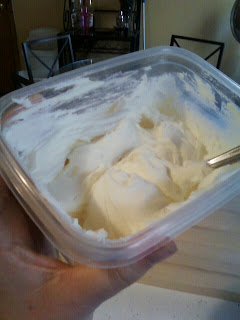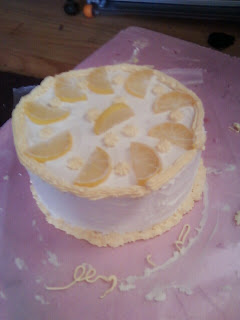Sorry for no pictures lately to accompany my posts. I left my camera briefly in the kitchen at one of the theatres where I work.
This kitchen also happens to be home base for a church food bank. Local homeless people tend to wander in and take things. I am thinking that the camera is gone. (not that all of the people who use the food bank are untrustworthy. I have paid some of them to help me move furniture before and they have been very nice, helpful and a pleasure to work with.)
Anyway, I was taking pictures in the kitchen because I was in the process of cooking up some fake blood. I'd love to share the do's and don'ts of this project with you.
The challenge here for me was the amount of blood needed. At a dramatic high point at the end of Act 1, one of the characters is describing a massacre. As he is describing the machine-gun fire that killed dozens of people, we wanted the bullet holes in the stucco walls to start oozing blood.
The first batch of blood I made was based on my
go-to recipe, only with more water and no chocolate sauce. I turns out, with the amount of corn syrup I was using, at $2 a bottle, it was going to cost us around $10/show to run this effect. Too much when there are 25 performances.
I did a little more research and came around to the idea of using thinned Jello. Each packet of Jello calls for 2 cups of boiling water to dissolve the gelatin and 2 cups of cold water to set it. I used the regular 2 cups of boiling water and then 8 cups of cold. A total of 10 cups of water per Jello packet. The result was a thick, syrupy liquid that cost only around $4 per show. Significantly cheaper.
I used Raspberry Jello (tends to be darker than the strawberrys and cherrys which can be too pink or red), and sugar free (to cut down on the sticky).
One of the major problems that I had was darkening the Jello. I started by trying to use coffee-mate, like I use with corn syrup blood. I was hoping that the milky color would make the blood more opaque and would provide the same non-stain characteristics it provides in corn syrup blood. When I first mixed it in, it looked good, but later I discovered that the coffee-mate didn't mix with the gelatin, and it ended up settling out as a film on the top of the liquid.
After a lot of thought about what would mix well with gelatin, I realized the best answer was more gelatin. I mixed in a packet of Jello chocolate pudding per 4 packets of raspberry jello and the color was perfect.
The effect ended up getting cut because we couldn't get it to work consistently, but I think that the new info I learned about fake blood is still worth sharing.
-There was a danger of the Jello setting too much in places along the tubes and hoses and clogging up the system. My guess would be that you would need to flush out the system once a week or so with hot water or even cleaner to keep everything in order.
-On the same line, I recommended that the ASM run the pump for a few seconds pre-show every night to get the air out of the system.
-I think the biggest problem might have been the pump itself, as sump pumps are not built to handle thickened Jello. I would recommend something more heavy duty. The
garden fountain pumps I have used for effects in the past might have been a better bet.
-Jello is sticky and smelly. I smelled like raspberry for days. Our stage was covered in sand, so we put cat litter at the base of the wall to aid with cleanup. Though the Jello seemed to wash off of walls and out of clothes very well, the sooner you wash it off, the better. And take steps against ants and bugs, they will be a problem if you aren't careful.
-The jello also started to ferment sealed in the tub we kept it in. My guesstimate is that you would want to use the blood within 3 or 4 days of making it. I was hoping to make all of what we needed at once, but it turns out that wouldn't have been an option.
In the end though I think that the cheapness of the Jello blood makes it a very important option to have when gallons of blood are needed.






















